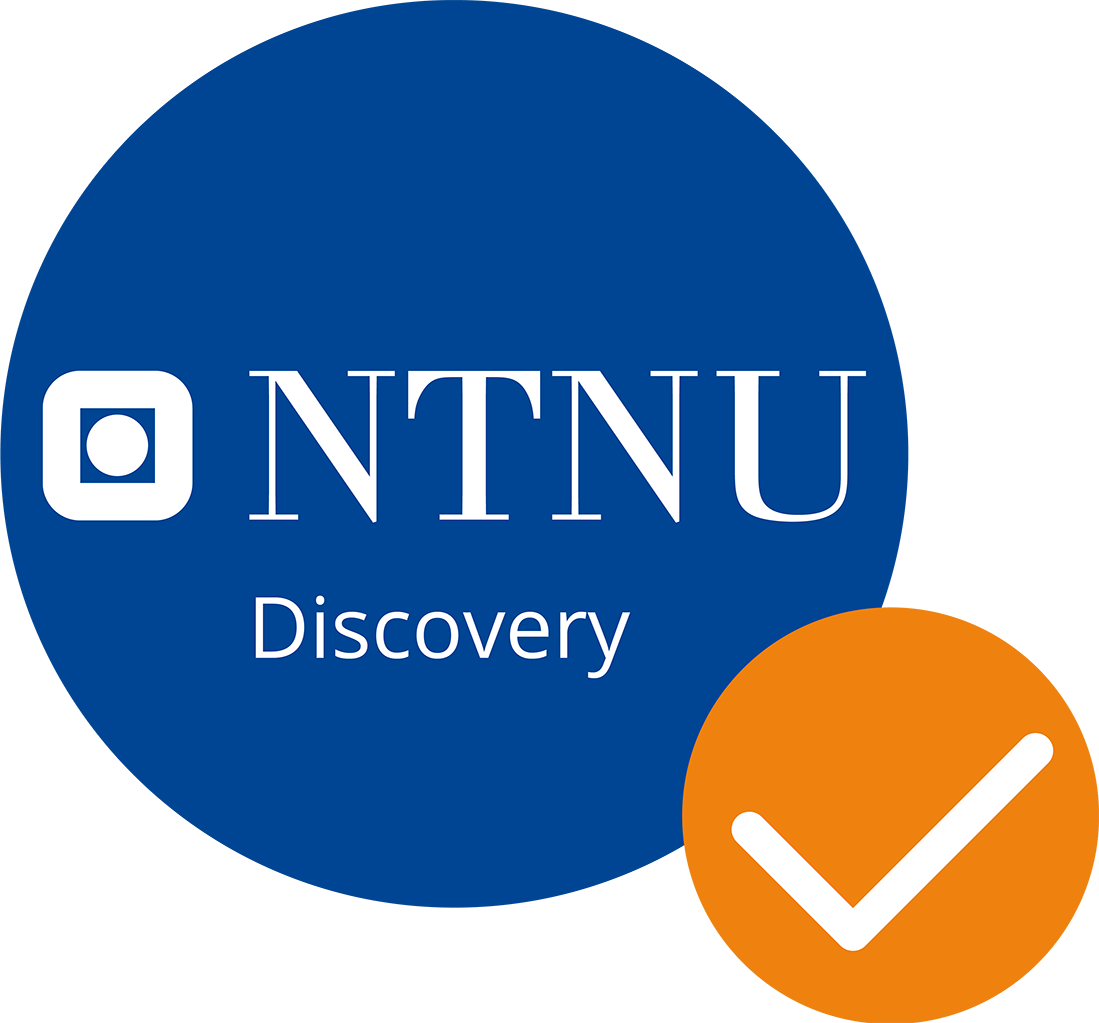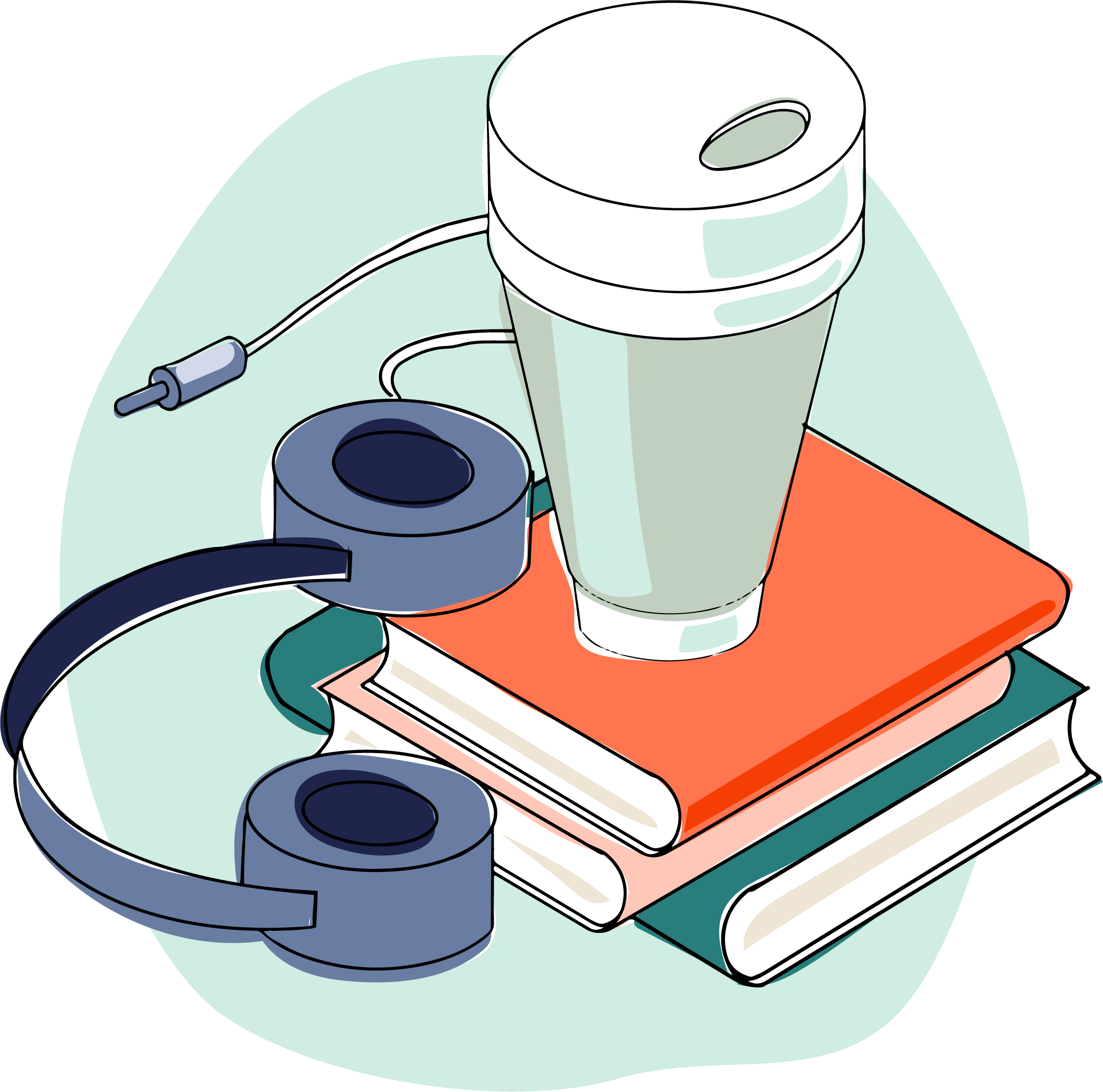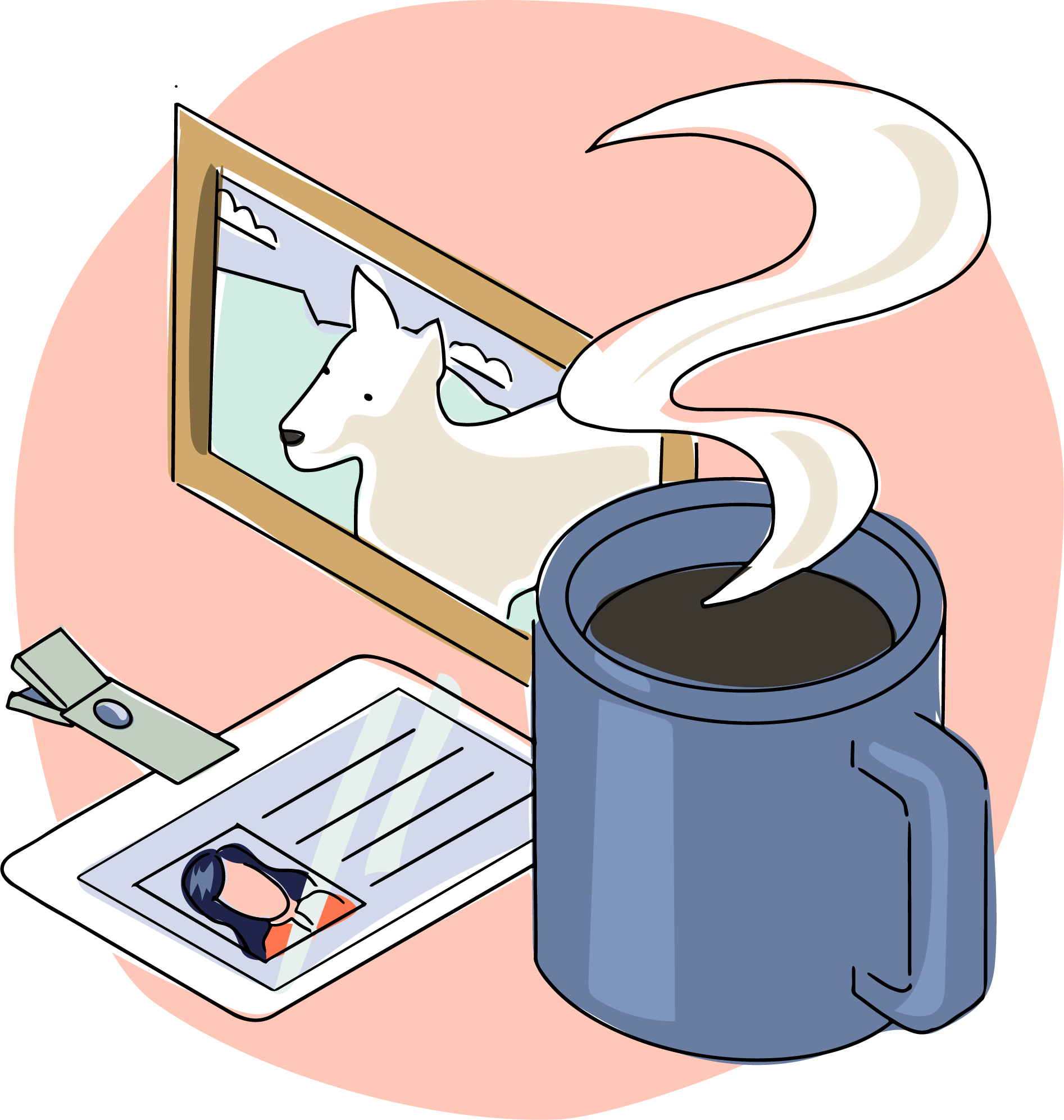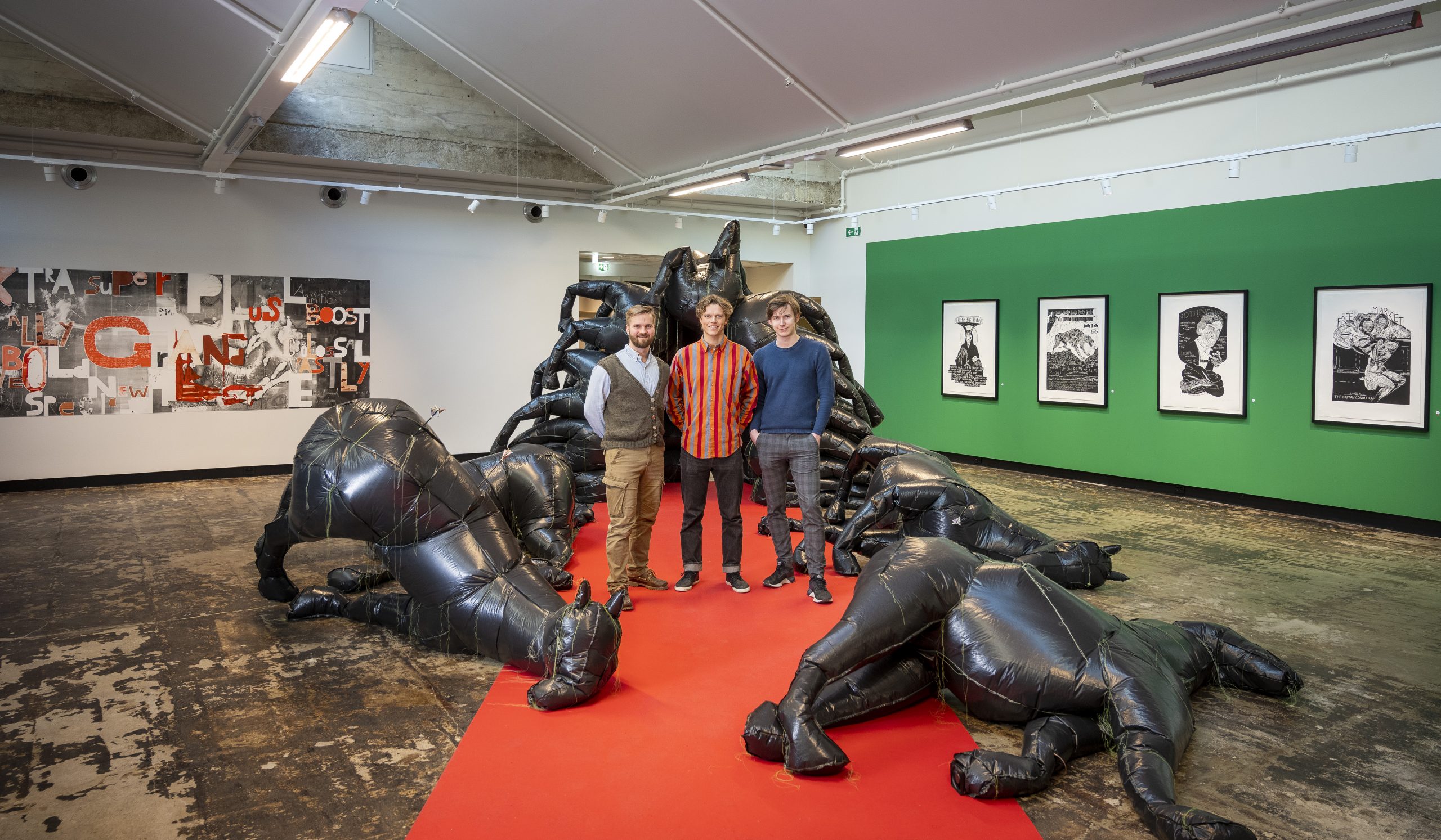
Vel bevart
Tekst og foto: infinitiv.no
Munchs malerier. Stavkirker. Grunnlovsdokumentet. Åkerspennen. Osebergskipet. Vi har mye å ta vare på i dette landet. Teknologiselskapet Bevart med utspring fra NTNUs Entreprenørskole vil sikre vår store kulturarv med små sensorer og smart programvare.
Vi befinner oss på historisk grunn i det praktfulle nye kunstmuseet Kjøpmannsgata Ung Kunst i Trondheim, ikke langt unna der Skipakrok, den første kjente havna i byen, en gang kanskje var. Det er ikke tilfeldig.
Studentene Christian Nielsen, Håvard Gardsjord Lystrup og Martin Olderskog bærer ikke tungt når de har tatt med seg det de mener skal gjøre det både billigere og enklere å sikre kunstskatter og andre museumsgjenstander. Med seg har de en bitteliten sensor og en fargerik app.
– Bevart startet som et ønske om å ta vare på kulturarv. Vi har nok av eksempler fra nyere tid på at det ikke gjøres ordentlig. Som kunsthistoriker har jeg en drøm om å arbeide med kunst, teknologi og forretningsutvikling i en og samme pakke, sier markedsansvarlig Christian Nielsen.
Kort fortalt har selskapet koblet det beste som finnes av trådløs sensorteknologi og koblet dette med en smart programvare som visualiserer data og sender ut varsel når noe galt er på ferde.
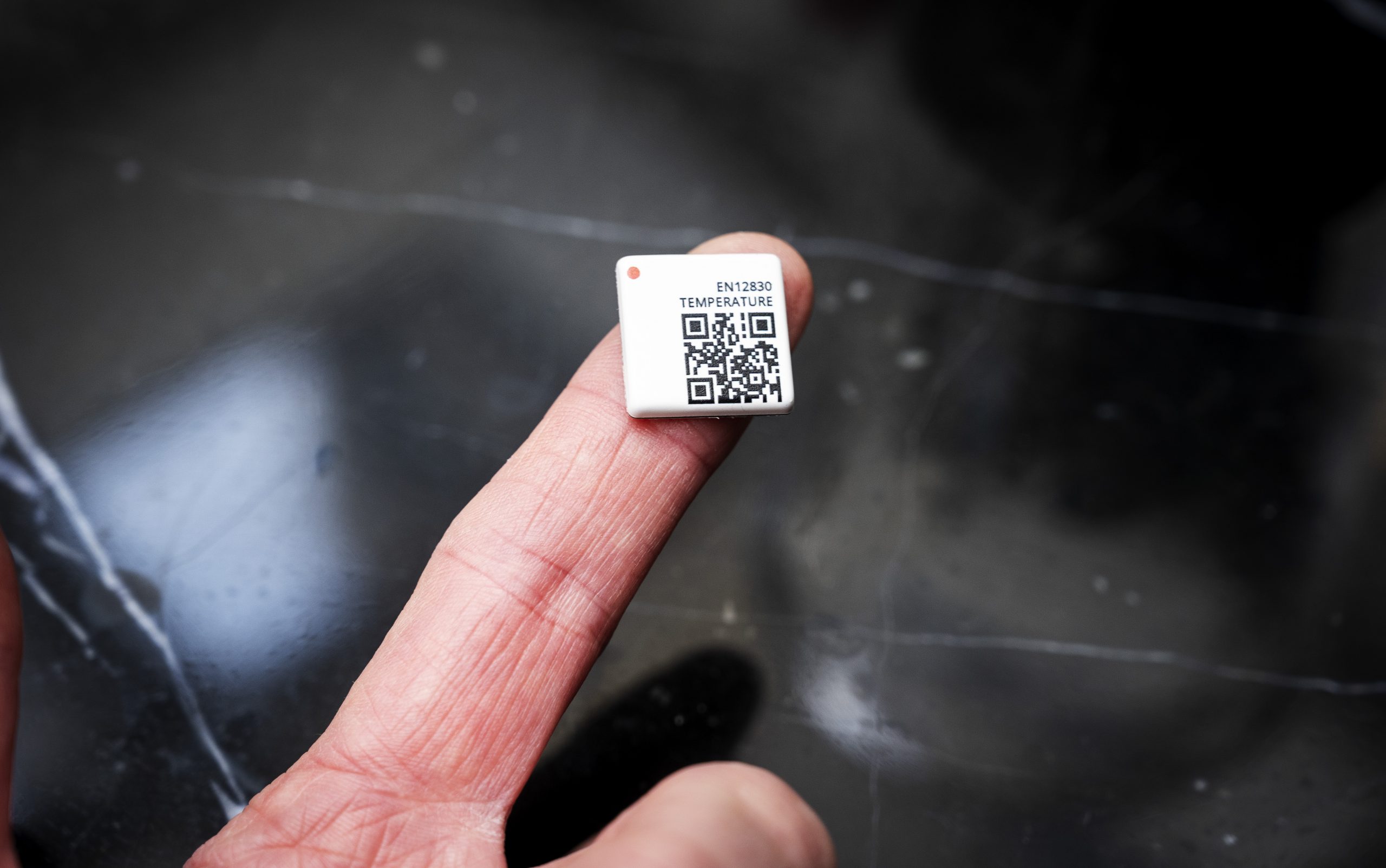
Løsningen er basert på ørsmå trådløse sensorer, kombinert med en programvare for overvåkning, varsling og rapportering.
Vil erstatte utdatert teknologi
Christian Nielsen foretrekker at de eksisterende løsningene på mange museer i dag selv stilles ut som museumsgjenstander.
– Teknologien som brukes er utdatert, hvor sensorene ofte er kablet og analoge. Sensorprodusenter ser heller etter større, enklere og mer betalingsvillige bransjer, sier Christian Nielsen.
Det er mye lettere å passe på et kjølelager med biff og medisiner enn kunst.
– Kunst som objekt er mye vanskeligere å ta vare på enn for eksempel biff og medisiner, som skal oppbevares kaldt og mørkt uansett. Kunsten skal jo sees av mennesker, som puster og ånder og trenger lys. Dette går litt mot hva konservatoren egentlig ønsker. De er lidenskapelig opptatt av bevaring, og skulle helst sett at kunsten stod trygt på et kjølig magasin, sier Christian.
Visning og oppbevaring av kunst- og kulturgjenstander er en dragkamp mellom gode utstillingsforhold og gode oppbevaringsforhold. Bevart sin sensor- og programvareløsning vil gjøre det lettere å vise fram sårbare utstillingsgjenstander, samtidig som de blir tatt vare på.
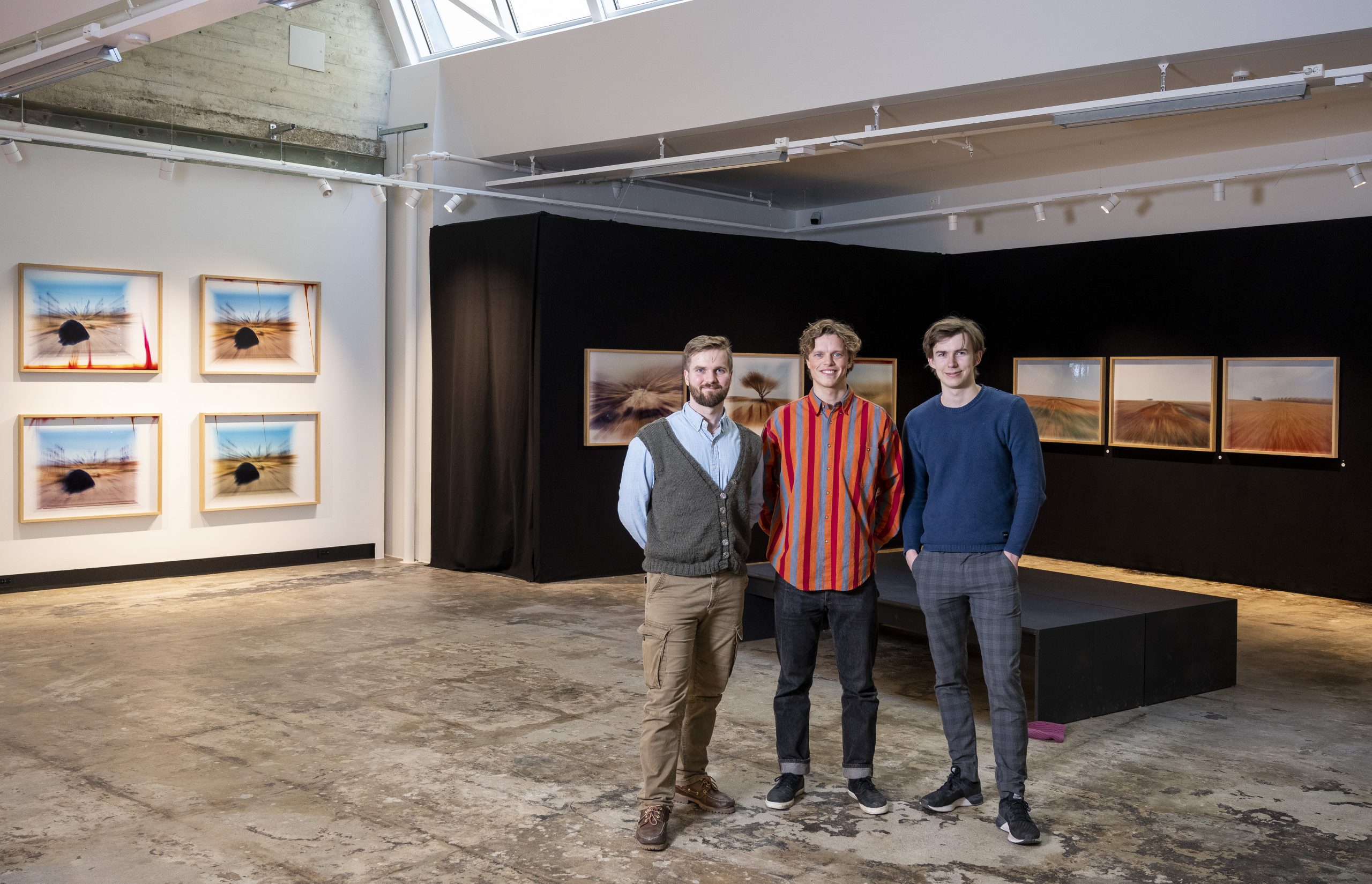
Studentene Christian Nielsen, Håvard Gardsjord Lystrup og Martin Olderskog avbildet i det nye kunstmuseet Kjøpmannsgata Ung Kunst i Trondheim.
Vil forenkle konservatorenes arbeidshverdag
Konservatorene i museene er enige i at dagens sensorløsninger ikke er bra nok. Sjefskonservator Tatiana Marasco på British Museum i London, med sine 700 ulike sensorer, har etablert et nettverk av misfornøyde kunder av sensorprodusenten Hanwell. Konservator Erik Markestad på KODE i Bergen, som blant annet forvalter hjemmene til Edvard Grieg og Ole Bull, forteller at konservatorene i snitt bruker én dag i uka bare på å samle inn informasjon fra deres datalogger. Det var nok til at KODE ba entreprenørskolen om å se etter enklere og billigere sensorløsninger.
KODE stilte for noen år siden ut en rekke klassiske fioliner, blant annet kostbare Stradivarius-er. Eierne av slike gjenstander krever ofte jevnlige rapporter om faktorer som kan være skadelig for instrumentet, slik som luftfuktighet og temperatur. For å få ut disse rapportene, må konservatoren åpne opp de klimatiserte utstillingsmontrene, koble til sensorene med PC via USB, kopiere over data og så å sende ut et komplisert regneark til eierne av gjenstandene.
Teknisk sjef Håvard Gardsjord Lystrup åpner appen på sin mobiltelefon og henter kjapt ut info fra sensoren i grønn sal på KODE 2 i Bergen. Her får han øyeblikkelig opp sanntidsinformasjon om klimatiske forhold.
– Jeg kan enkelt lage en oversiktlig rapport i PDF-format, stille inn grenseverdi og bli varslet på SMS eller e-post når det nærmer seg en grense, sier han.
10–15 års batteritid
Løsningen er basert på ørsmå trådløse sensorer fra det norske teknologiselskapet Disruptive Technologies, kombinert med en programvare for overvåking, varsling og rapportering. Appen er utviklet i et kodeløst utviklingssystem fra Appfarm, et selskap som også har sine røtter fra entreprenørskolen.
Martin Olderskog ble hentet inn som student fra Appfarm, og er ansvarlig for utvikling av programvaren i Bevart. Han forklarer at systemet til Appfarm tillater dem å utvikle og tilpasse programvaren kjapt og effektivt.
– Vi kan lage løsninger ti ganger kjappere og få et ferdig produkt på noen få måneder, som ellers ville tatt minimum to år, sier han.
Selve sensorene er et imponerende lite stykke teknologi, på størrelse med en kvadratisk flat legokloss (kun 19 millimeter langs siden og 2,8 millimeter høy). Størrelsen gjør at sensorene kan plasseres og skjules nesten hvor som helst. Sensorene sender trådløst ut informasjon om temperatur, lysforhold og luftfuktighet til en mottaker hvert eneste kvarter til batteriet dør ut etter 10–15 år.
I tillegg er sensorene betraktelig billigere og enklere å sette opp enn tradisjonelle sensorer.
– Folk som selger sensorer i dag fakturerer ekstremt mye penger for å komme å installere sensorene. Med vår løsning kan kunden enkelt installere dette selv, du trenger bare å koble huben i stikkontakten og plassere sensorene der du vil, for eksempel bak et bilde, sier Christian.
Bevart sikter på å levere produktet som en tjeneste med månedsabonnement, slik at museer og andre kunder slipper store oppstarts- og byttekostnader som ofte følger med de tradisjonelle sensorene.
Sikrer stavkirke
Selskapet har allerede plassert ut sine sensorer flere steder i Norge, blant annet i Garmo stavkirke på Maihaugen på Lillehammer, KODE kunstmuseum og komponisthjem i Bergen og Britannia i Trondheim gjennom Nidaros Security.
I tillegg ønsker selskapet å overvåke kunstverk under transport med sensorer som dokumenterer vibrasjoner, bevegelser og GPS-posisjon.
– De fleste av skadene på kunstverk skjer under flytting. Vi vil lage en løsning som følger kunstverket fra A til B, hvor du har full overvåking fra du løfter kunstverket fra veggen til du henger det opp igjen, sier Christian Nielsen.
Studentene bak Bevart har fått bevilget 75 000 kroner fra NTNU Discovery til å videreutvikle tjenesten.
Andre nyheter
Nye millioner til ansatte og studenter
Stor prisutdelingskveld med tildeling av hovedprosjektmidler fra NTNU Discovery under arrangementet Tech, Hugs and Rock’n’Roll på Digs torsdag 5. juni.
Femten minutters bedømmelse
Du får femten minutter til å overbevise juryen i NTNU Discovery om at ditt prosjekt er verdig støtte til hovedprosjektmidler.
Kunnskapsmangel gir kattepine
Hvis katter skal leve opp til ryktet om å ha ni liv, må katteeiere få mer kunnskap om kjæledyrene som okkuperer fanget vårt mens vi ser på TV og holder oss med selskap når vi går på do.
Millioner til banebrytende idéer
Lyddempende paneler limt sammen av sopp. Avansert mikroskopkamera som filmer hjerneceller på aktive forsøksdyr. Miljøvennlig gassinjektor til øyekirurgi som reduserer risikoen for komplikasjoner og klimautslipp. Dette var noen av de innovative oppfinnelsene som ble tildelt NTNU Discoverys hovedprosjektmidler ved utdelingsseremonien på Gruva på Gløshaugen torsdag 7. november.
Operasjon og innovasjon
Helse Midt-Norge RHF er en trofast hovedsamarbeidspartner til NTNU Discovery. Det betyr at alle ansatte i regionens største arbeidsplass, rundt 22.000 i tallet, kan få støtte til å teste ut om idéene sine har et kommersielt potensial.
Kontakt:
Prosjektleder
Jan Hassel
Epost: jan.hassel@ntnu.no
Telefon: 906 53 180
Kontor: Hovedbygget, sokkel
Håvard Wibe
Epost: havard.wibe@ntnu.no
Telefon: 41 47 37 68
Kontor: Hovedbygget, sokkel

